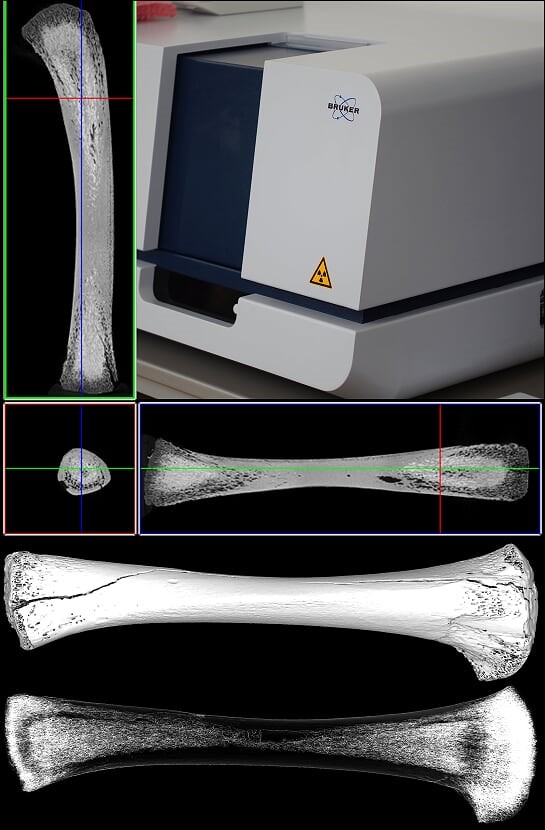Physical anthropology
Human bones from archaeological sites provide opportunity to analyse influence of different lifestyles on human health, life-span and bone behaviour. In our research, in a field of Physical anthropology, we combine different techniques: macroscopic, morphometric, isotopic and biomolecular. The main aim is to define bone changes caused by shift in a lifestyle during transitional periods, such as Neolithisation, when humans for the first time experienced fertility increase and started to consume domesticated cereals and milk. We analyse ancient bones, stable isotopes and organic remains trapped in dental calculus.
Ancient human bones can inform about stature, weight, body mass index, muscle attachments or pathological conditions. By studying ancient bones we can understand how cultural changes influence human biology.
Stable isotope analyses of bone and teeth collagen (C, N, S) give information on the protein intake and its changes along life: the mother milk consumed, the introduction of weaning food and the type of resources eaten by children and mothers. We are focused on understanding changes in dietary habits with Neolithisation and duration of breastfeeding with the introduction of new food stuffs (cereals and milk).
Calculus contains various plant cells, such as phytoliths or starch grains, which can survive for a long period of time. Research of these cells gives direct evidences on diet and oral health, and on the beginnings of agriculture. We are investigating emergence of cultivated plants (cereals), in the Balkans, around 8000 years ago, which influenced population growth, since humans had for the first time a stable food supply available throughout the year.

Projects:
ERC Birth – Birhts, mothers and babies: prehistoric fertility in the Balkans between 10000 – 5000 cal BC, GA 640557, ERC-2014-STG
People of Lepenski Vir: protocol for digitalization of bioarchaeological heritage Ministry of Culture, GA 19-01-92/2018-09